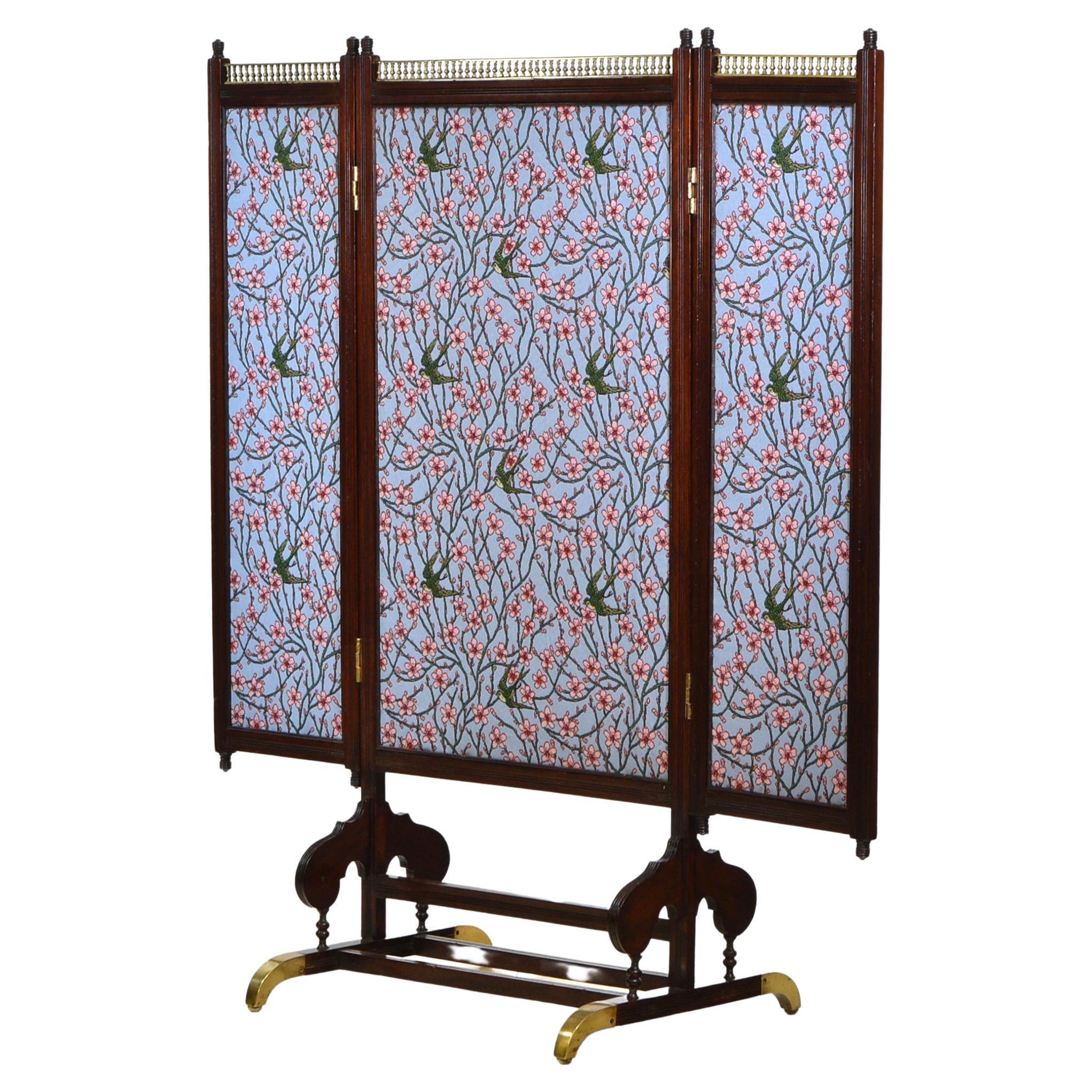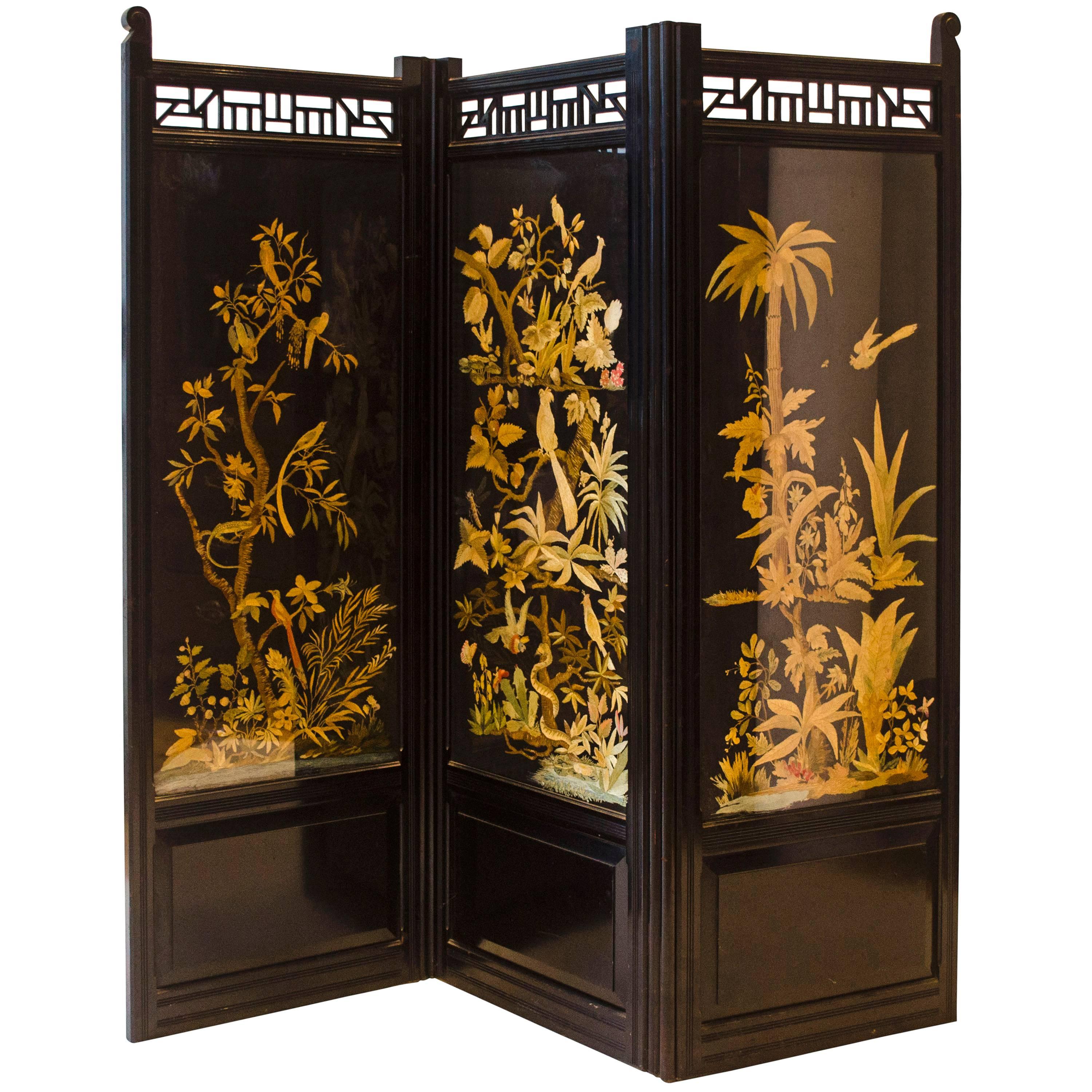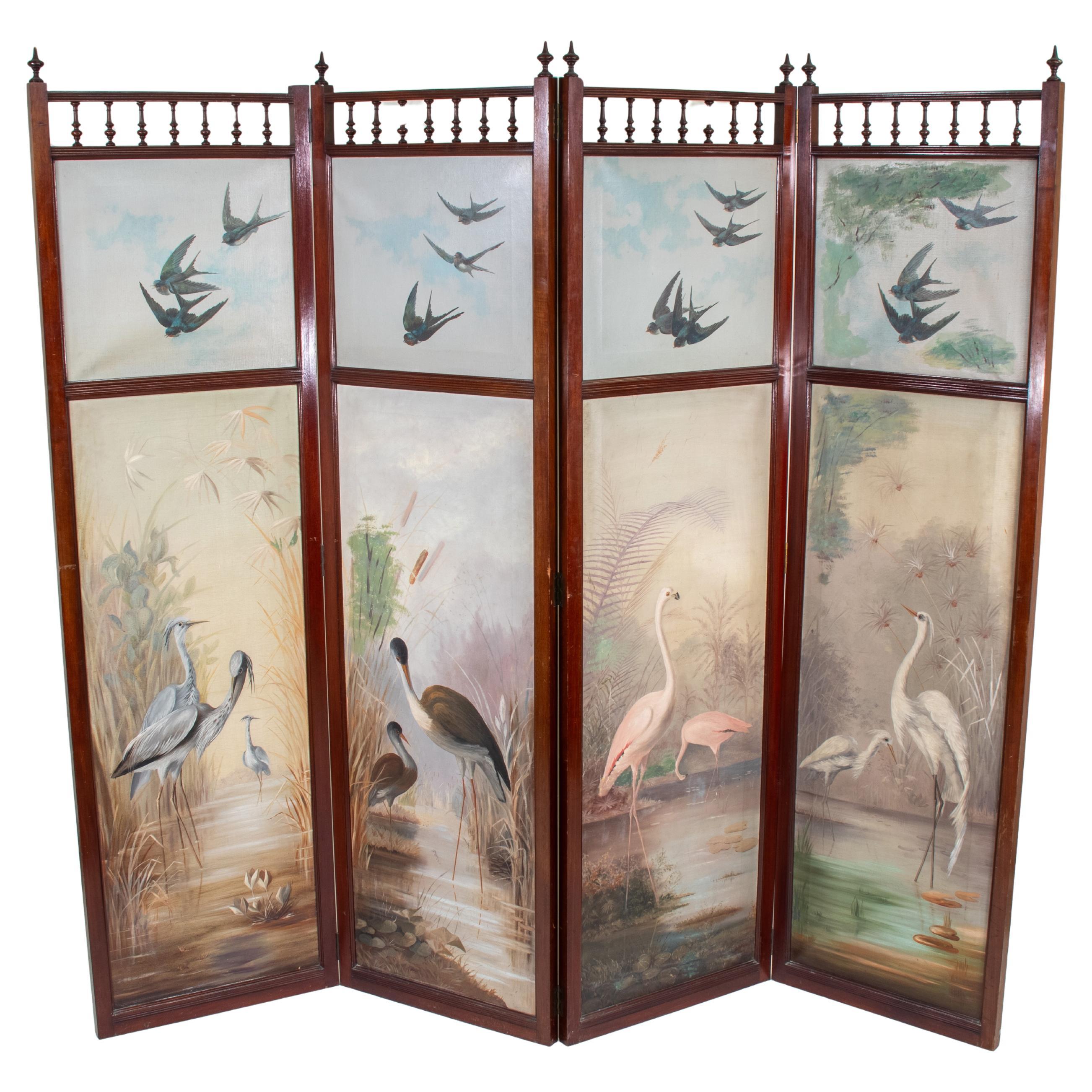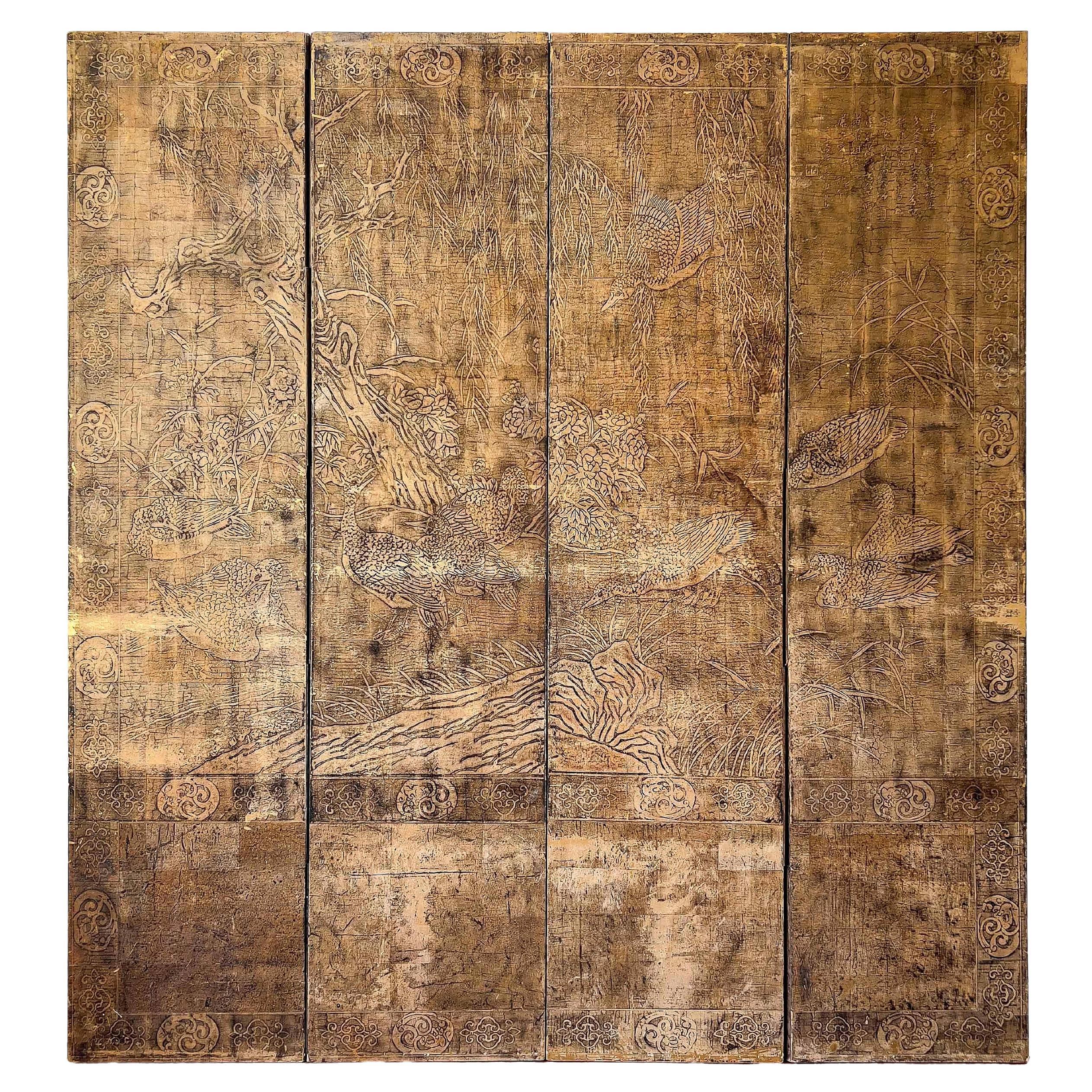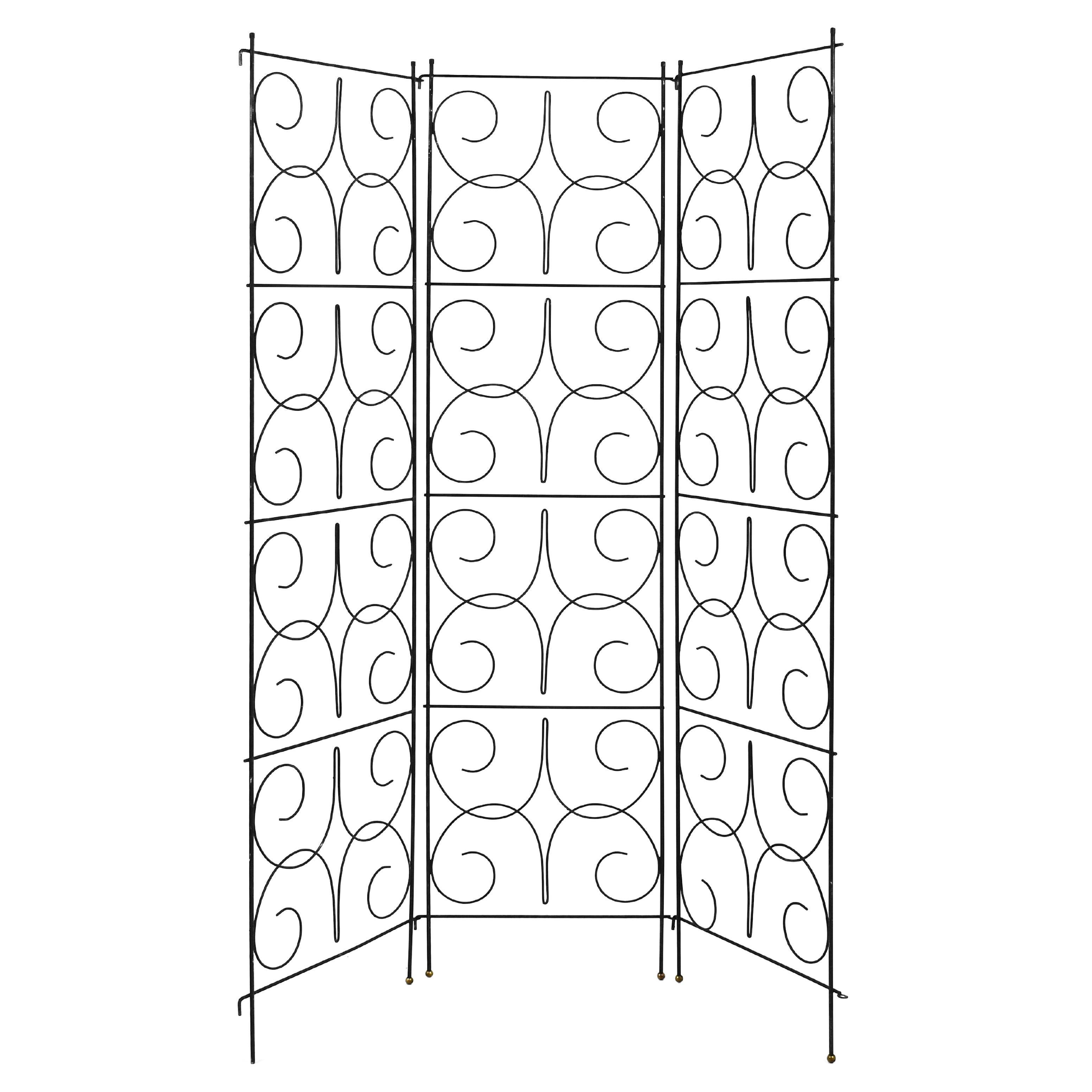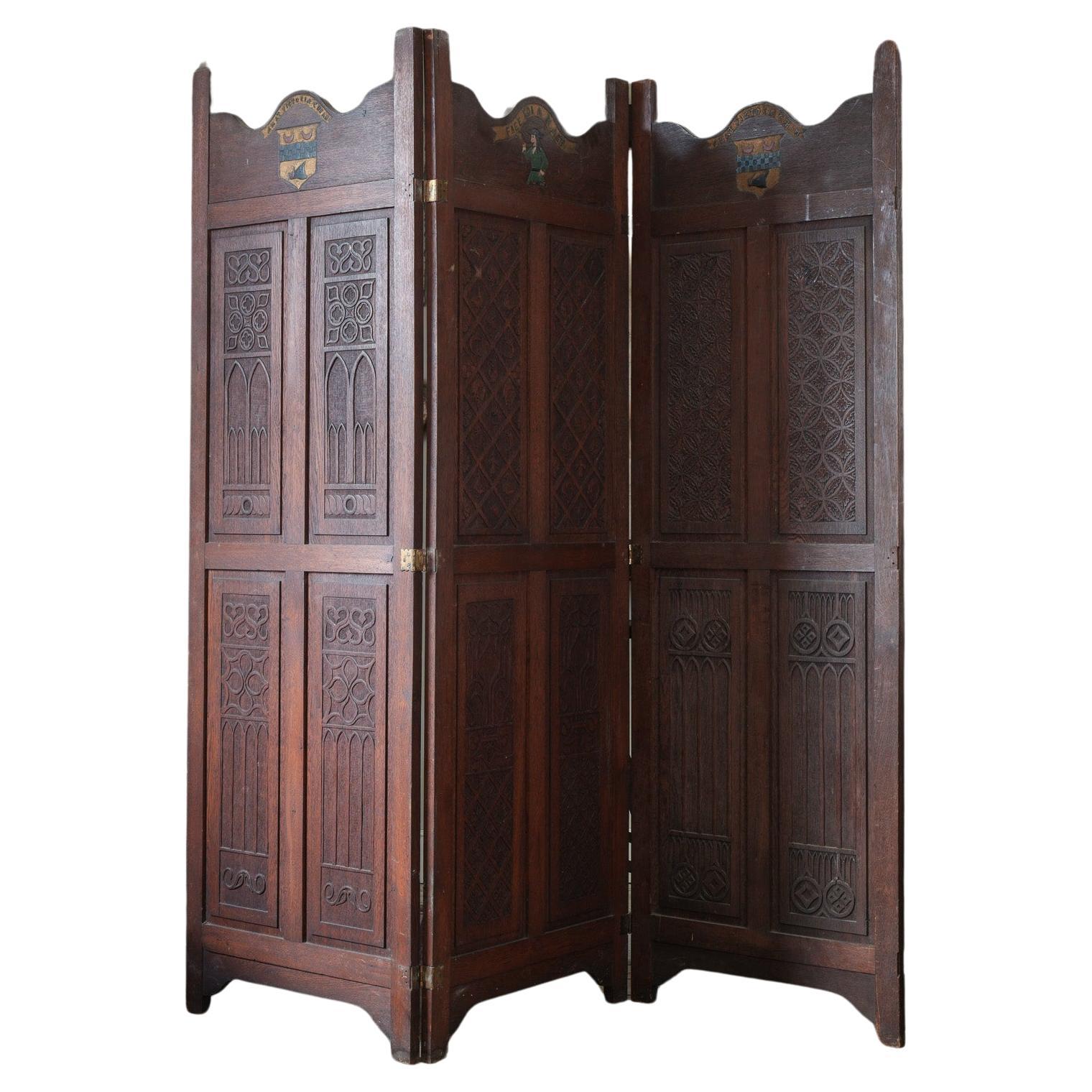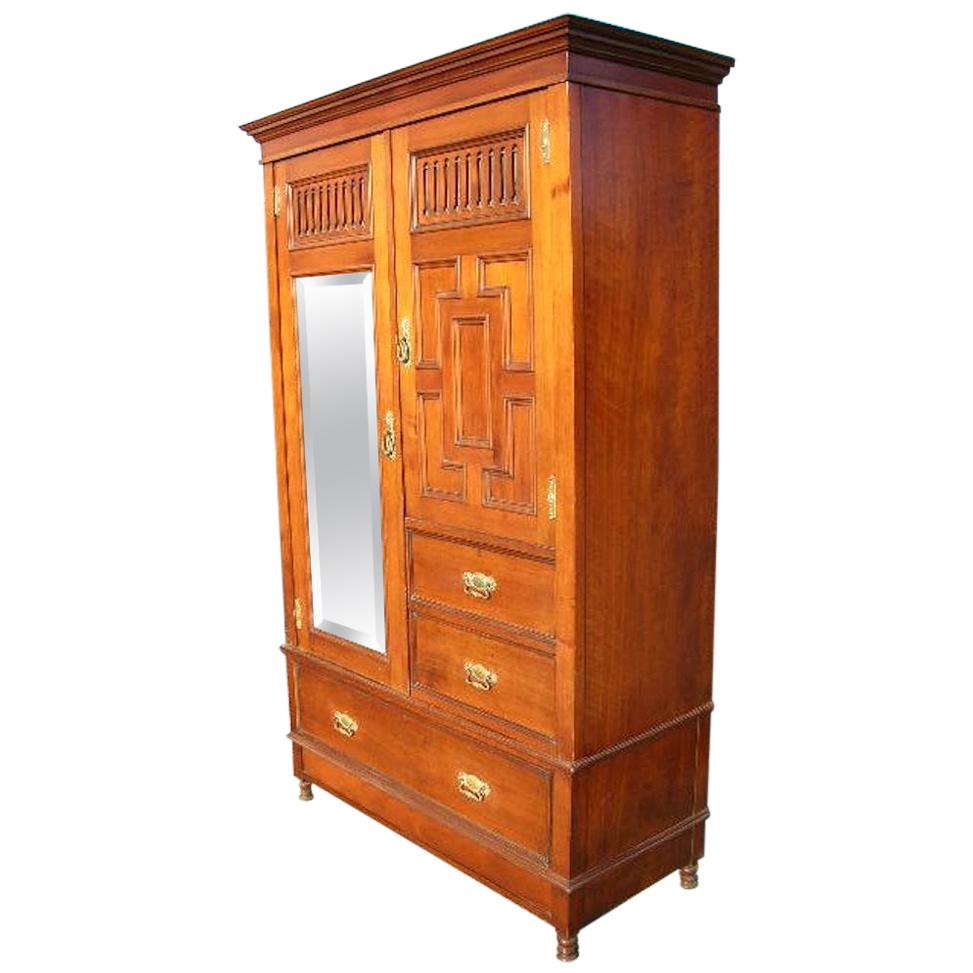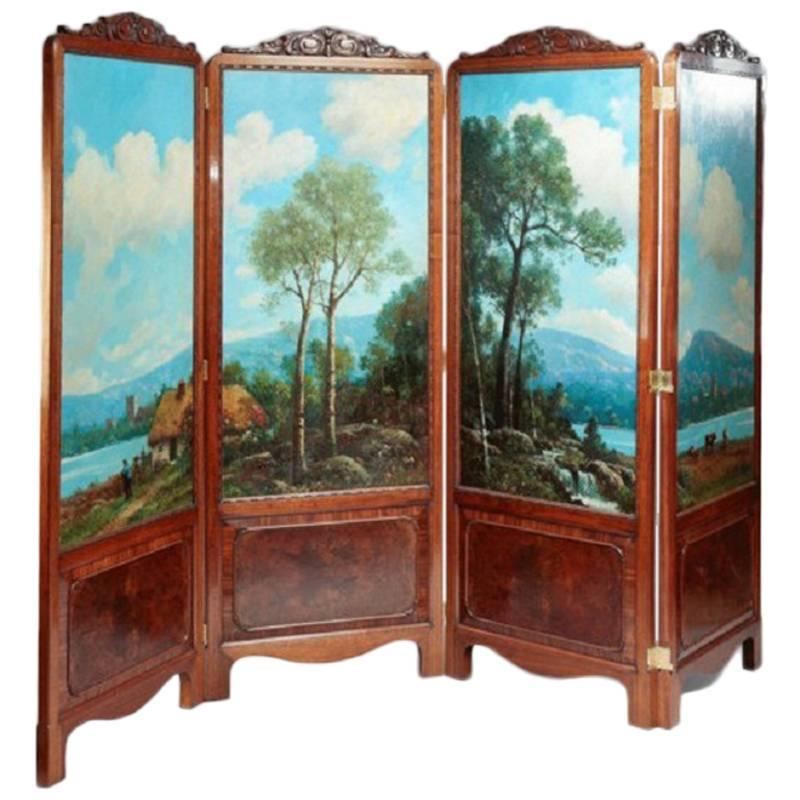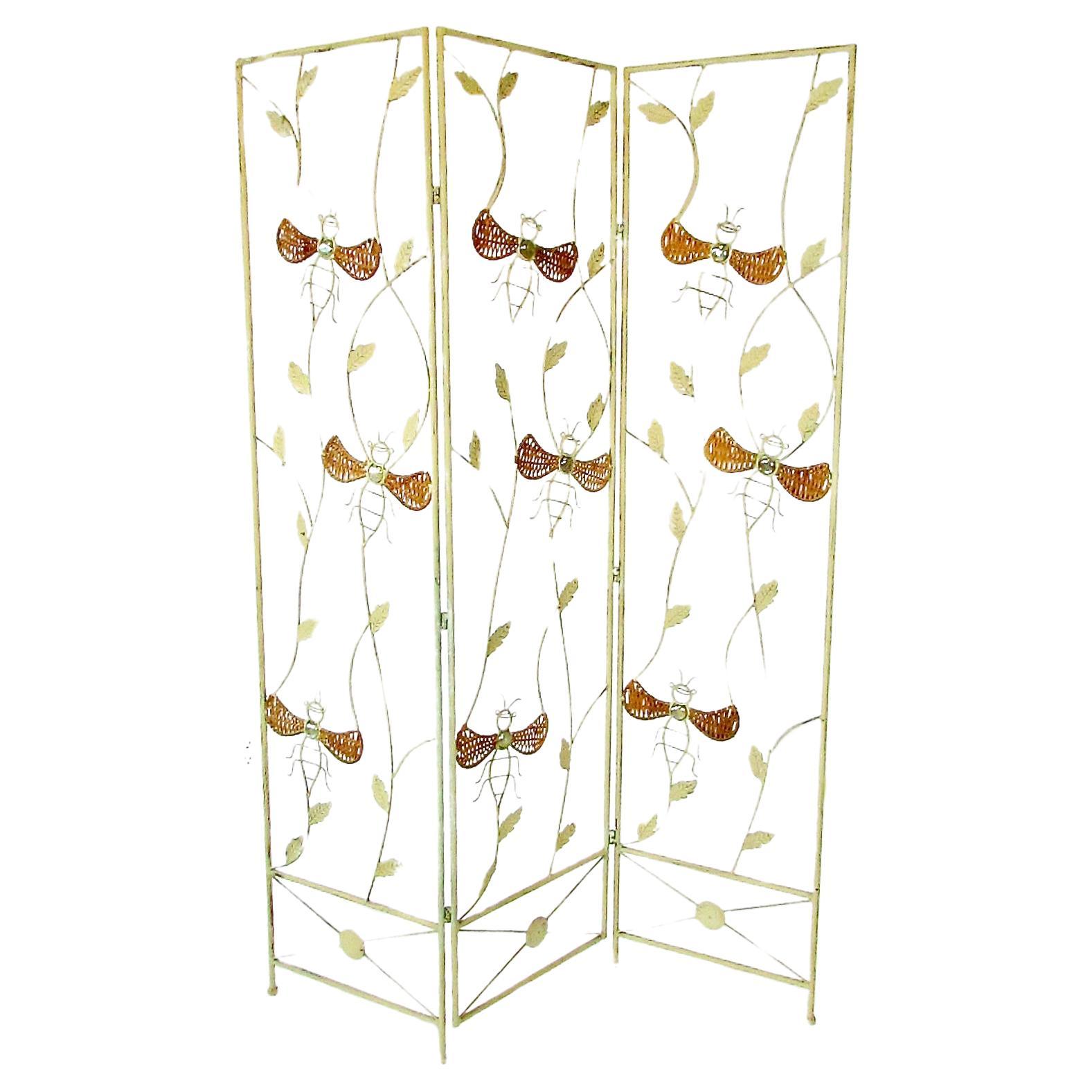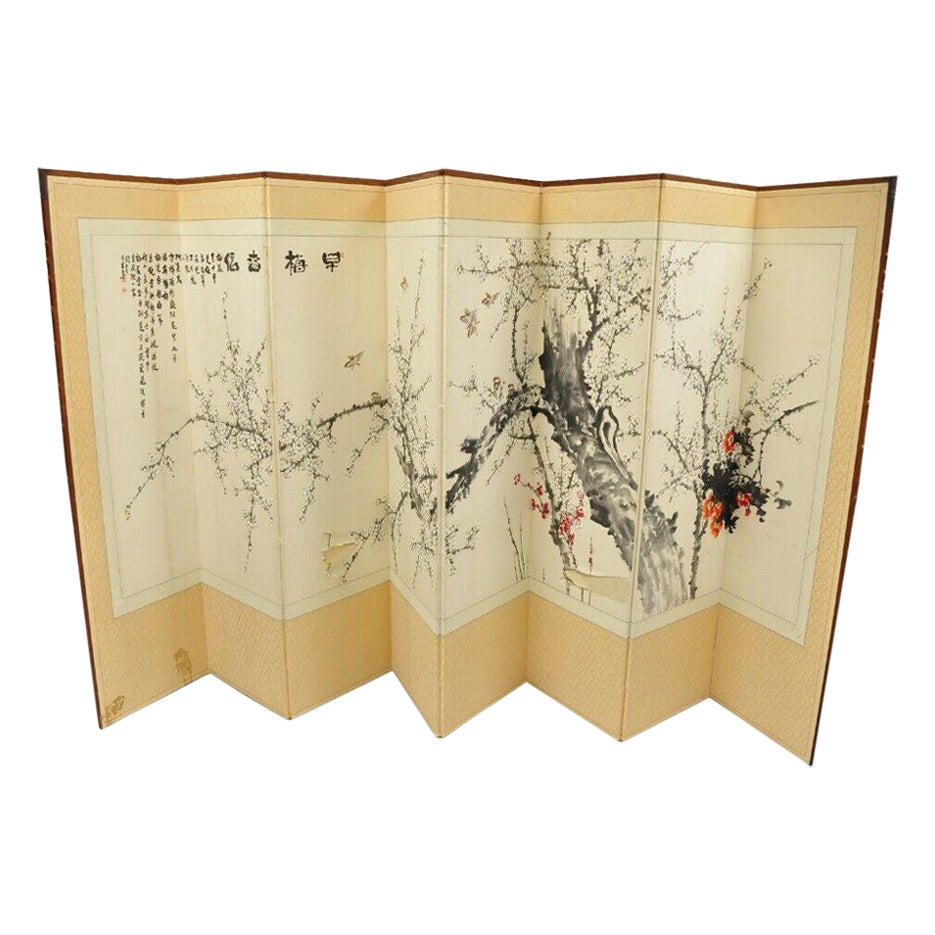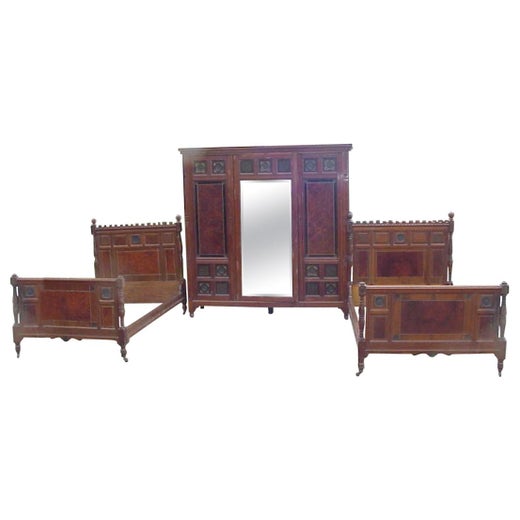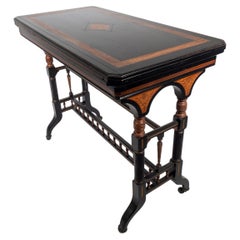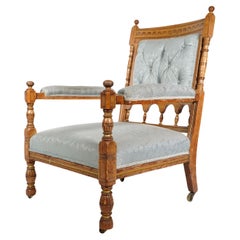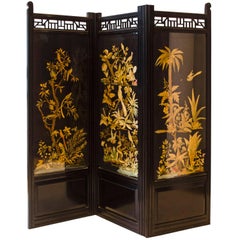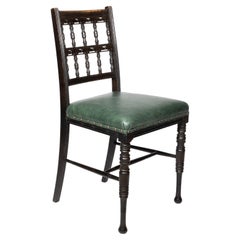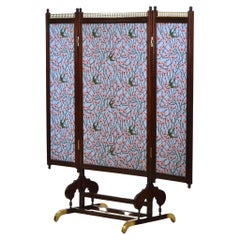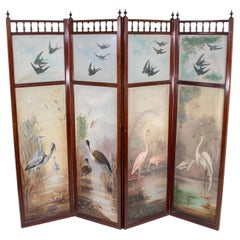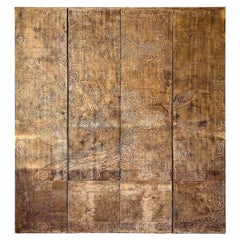
Gillows attr, An Aesthetic Movement Three-Fold Screen with Birds Amongst Blossom
View Similar Items
Gillows attr, An Aesthetic Movement Three-Fold Screen with Birds Amongst Blossom
About the Item
- Creator:Bruce James Talbert (Designer)
- Dimensions:Height: 58.5 in (148.59 cm)Width: 70 in (177.8 cm)Depth: 1 in (2.54 cm)
- Style:Aesthetic Movement (Of the Period)
- Materials and Techniques:
- Place of Origin:
- Period:
- Date of Manufacture:1880
- Condition:Wear consistent with age and use. Minor losses. Minor fading. There is a little wear to the plain outside areas, but the inside tapestry is in wonderful original condition. All the tuft is good due to the screen being closed which has naturally preserved the interior. A beautiful work of art.
- Seller Location:London, GB
- Reference Number:1stDibs: LU224335647983
Bruce James Talbert
Bruce James Talbert was one of the most noteworthy furniture designers of the 19th century. The Scottish architect, draftsman and designer created stunning pieces of Gothic furniture and his landmark book, Gothic Forms Applied To Furniture, Metalwork and Decoration For Domestic Purposes, was influential on the Gothic Revival movement both in Europe and North America.
Born in 1838, Talbert started his career as an apprentice to a woodcarver in Dundee, Scotland. When he was 18 years old, he was briefly employed by the architect Charles Edward. He subsequently had several successful partnerships with design firms and manufacturers.
In 1862, Talbert moved to Manchester, England, where he was hired to design furniture for Doveston, Bird & Hull. Later that year, British metalworker Francis Skidmore hired him to his company, Art Manufacturers. During his time with the company, Talbert worked on Sir George Gilbert Scott’s Hereford Screen, a major Gothic Revival iron design, and the Albert Memorial. In 1866, Holland & Sons furniture manufacturer in London hired Talbert. He won the silver medal at the International Exposition of 1867 in Paris and, in 1868, he became the lead designer for Gillows of Lancaster and London. There, Talbert expanded his line of work, exploring different media and producing beautiful tiles, stained glass, textiles and metalwork.
Talbert influenced the Gothic Revival style with his detailed furniture designs, recognizable for their gold and wood mosaic inlays. His many publications on woodworking and cabinetmaking further guided the American industry, including the work of furniture designers Herter Brothers, Kimbel and Cabus, Frank Furness and Daniel Pabst.
On 1stDibs, find Bruce James Talbert case pieces and storage cabinets, seating, tables and more.
More From This Seller
View AllAntique 1870s English Aesthetic Movement Side Tables
Walnut
Antique 1880s English Aesthetic Movement Armchairs
Oak
Antique Late 19th Century British Anglo-Japanese Screens and Room Dividers
Walnut
Antique 1880s English Aesthetic Movement Office Chairs and Desk Chairs
Walnut
Antique 1880s Aesthetic Movement Dining Room Tables
Walnut
Antique 1880s English Aesthetic Movement Side Tables
Mahogany
You May Also Like
Antique 19th Century British Aesthetic Movement Screens and Room Dividers
Walnut, Silk
Antique Mid-19th Century English Aesthetic Movement Screens and Room Div...
Mahogany, Glass, Canvas
Antique Early 1900s Screens and Room Dividers
Lacquer
Mid-20th Century Screens and Room Dividers
Iron
Vintage 1960s American Mid-Century Modern Screens and Room Dividers
Iron
Early 20th Century Scottish Screens and Room Dividers
Mahogany
